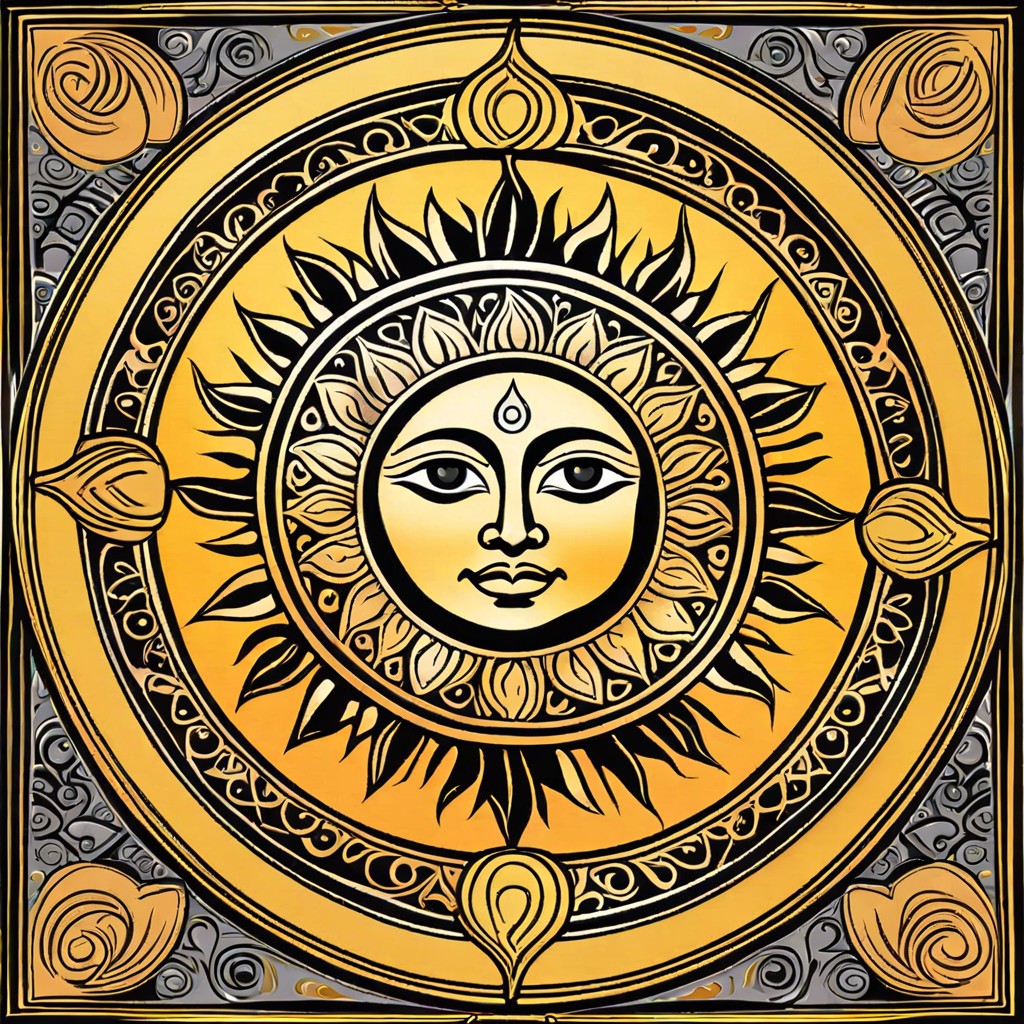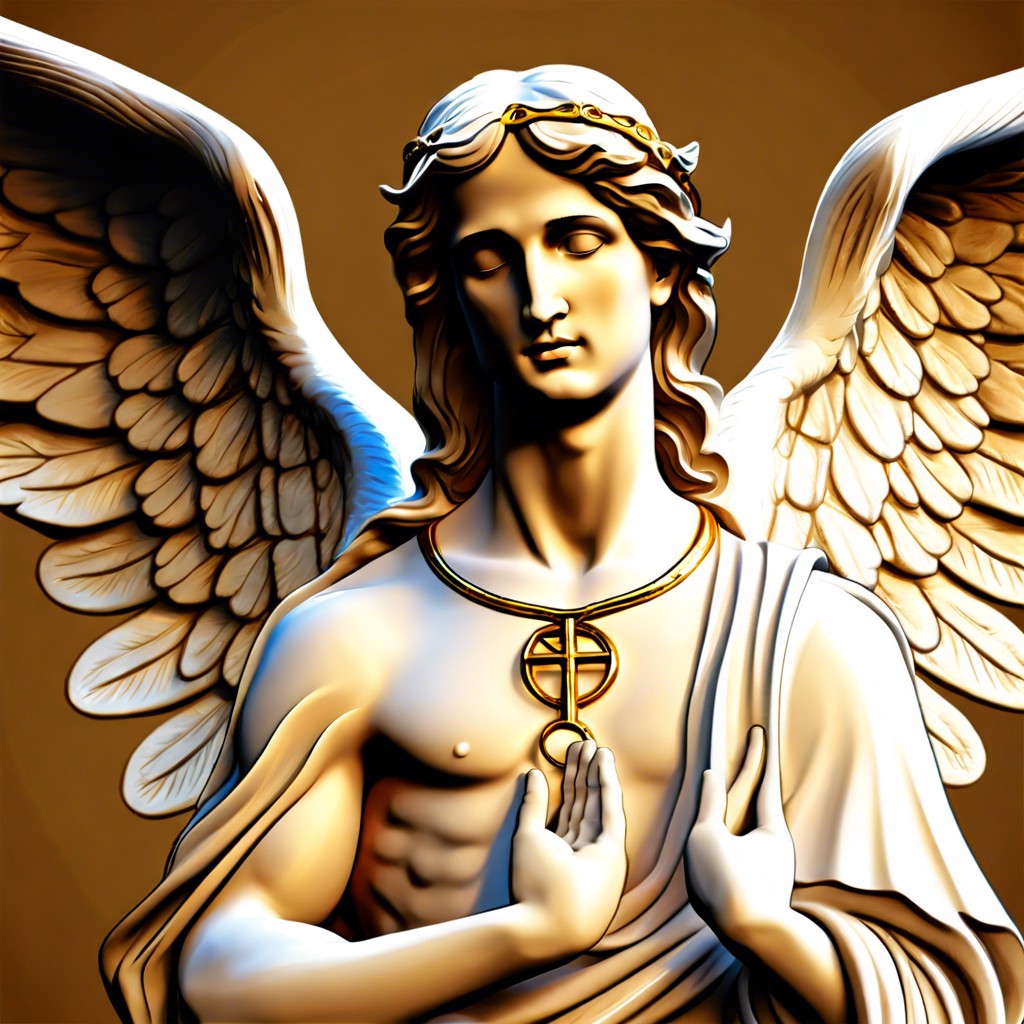Discover the rich spiritual symbolism of the sun and how it has represented enlightenment, growth, and positivity across various cultures and beliefs.
The sun has always cast its golden glow deep into the tapestry of human culture and belief, illuminating more than just our world. Across diverse cultures and epochs, the sun stands as a powerful symbol of vitality, enlightenment, and spiritual energy. This article dives into its significant roles in mythology, religion, personal growth, art, and literature, offering a comprehensive look at how this celestial body has shaped our collective consciousness. Ready to bask in the radiant symbolism and uncover its deeper meanings? Keep reading to enlighten your soul and mind.
Key takeaways:
- Sun symbolizes vitality and enlightenment in diverse cultures.
- Mythological sun deities represent power, life, and creation.
- The sun signifies personal growth, enlightenment, and resilience.
- Artists and writers use the sun to convey hope and renewal.
- Sun is a metaphor for life, vitality, and spiritual enlightenment.
Spiritual Significance in Various Cultures

In many cultures, the sun is revered as a powerful symbol of life and creation. In ancient Egypt, it represented the god Ra, who sailed across the sky and fought darkness nightly. This daily journey underscores the sun’s role as a bringer of light and order.
For the Incas, the sun god Inti was central to their cosmology, emphasizing the sun’s importance in agriculture and sustaining the world. Inti’s worship reflects the sun’s life-giving properties and its vital role in survival.
In Hinduism, the sun god Surya is a figure of health and vitality. Practicing Surya Namaskar, or Sun Salutation, in yoga honors Surya and connects physical movement with spiritual energy. This practice shows the integration of the sun in daily life and spirituality.
Indigenous cultures often view the sun as a sacred entity, with rituals and dances performed to honor its power and ensure its return each day. This reverence highlights the sun’s role beyond just a celestial object, symbolizing continuity and rhythm in life.
Representation in Mythology and Religion
In ancient Egypt, the sun god Ra was hailed as the creator of all life, symbolizing authority and power. Ra’s daily journey across the sky mirrored the eternal cycle of life, death, and rebirth.
The Norse mythology revered Sunna, the sun goddess, who rode through the sky in a chariot pulled by horses. Her presence brought light and warmth, essential for survival in harsh climates.
Hinduism views the sun as Surya, a significant deity representing discernment and wisdom. Worshippers offer prayers to Surya to seek clarity and guidance.
In Christianity, the sun often symbolizes Jesus Christ, relating to themes of resurrection and divine illumination. Its rising signifies hope and renewal.
Across these traditions, the sun frequently embodies life-giving energy and spiritual illumination, revealing a universal reverence for this celestial body.
Symbolism in Personal Growth and Enlightenment
Embodying the essence of clarity and awakening, the sun often symbolizes personal growth. Its daily rise signifies new beginnings, encouraging individuals to embrace change and move forward. This natural cycle serves as a reminder that growth is an ongoing process.
The sun’s light can also represent enlightenment. Much like how sunlight dispels darkness, gaining knowledge and insight illuminates our path, helping us see things more clearly. This understanding invites a deeper level of awareness and consciousness.
Furthermore, the sun’s warmth is akin to the nurturing energy we need for personal development. Just as plants need sunlight to thrive, our souls require the light of positivity and growth-oriented mindset to flourish.
Lastly, the sun’s powerful presence in the sky signifies confidence and self-assurance. It encourages us to shine brightly, stay strong, and maintain resilience even through challenging times.
Use in Art and Literature
Artists often use the sun as a potent symbol to convey themes of hope, life, and enlightenment. Think of Van Gogh’s “Sunflowers” – vibrant, life-affirming, almost spiritual in their celebration of light.
In literature, the sun frequently represents clarity and truth. Consider Ernest Hemingway’s “The Sun Also Rises,” where the title itself hints at renewal despite life’s struggles.
The sun’s journey from dawn to dusk mirrors human experiences. Sunrise often symbolizes new beginnings, while sunset can signify closure or the end of a chapter. These images are simple yet deeply evocative.
Muralists and fresco painters have similarly harnessed the sun’s energy to breathe life into their work, making scenes more dynamic and impacting viewers profoundly.
By incorporating the sun, both art and literature enrich their narratives, adding layers of meaning that resonate with universal human experiences.
Connection to Life and Vitality
The sun is often seen as a crucial metaphor for life. Its daily rise symbolizes new beginnings, offering a fresh start each day. Just as plants need sunlight to grow, humans rely on the sun for physical health, as it aids in the production of vitamin D, which is vital for our well-being.
Many cultures view the sun as a life-giving force, essential for survival. Ancient civilizations like the Egyptians even worshiped the sun god Ra, believing that it governed life and order.
Moreover, the sun’s consistency and reliability—rising and setting each day—mirrors the dependable rhythms of life. It embodies vitality and energy, attributes that many people strive to bring into their own lives.
The sun also serves as a symbol of enlightenment and clarity. Just as sunlight illuminates the Earth, it can represent the light of understanding that dispels the darkness of ignorance. In this way, it’s not just about physical vitality but also about intellectual and spiritual awakening.





